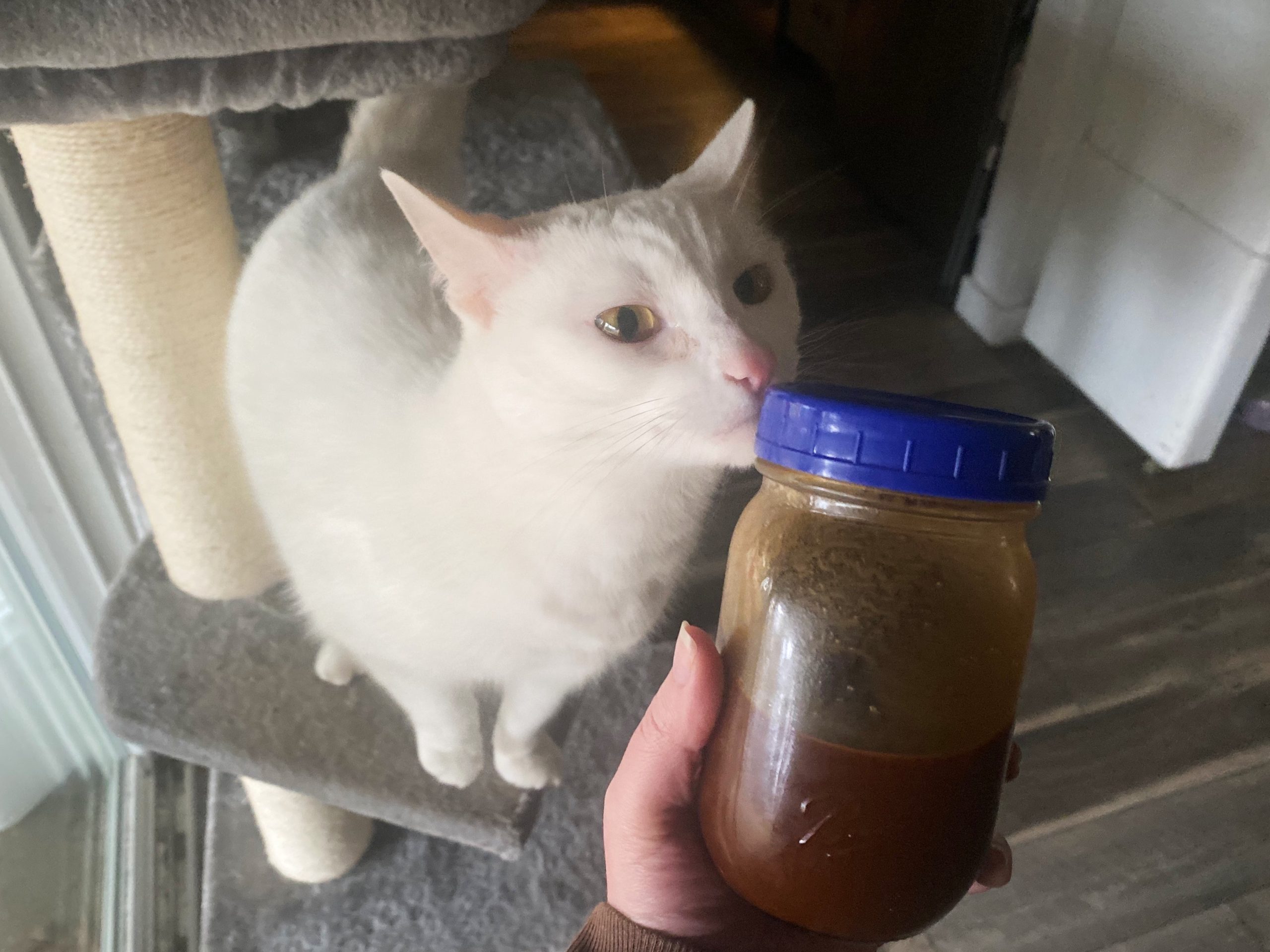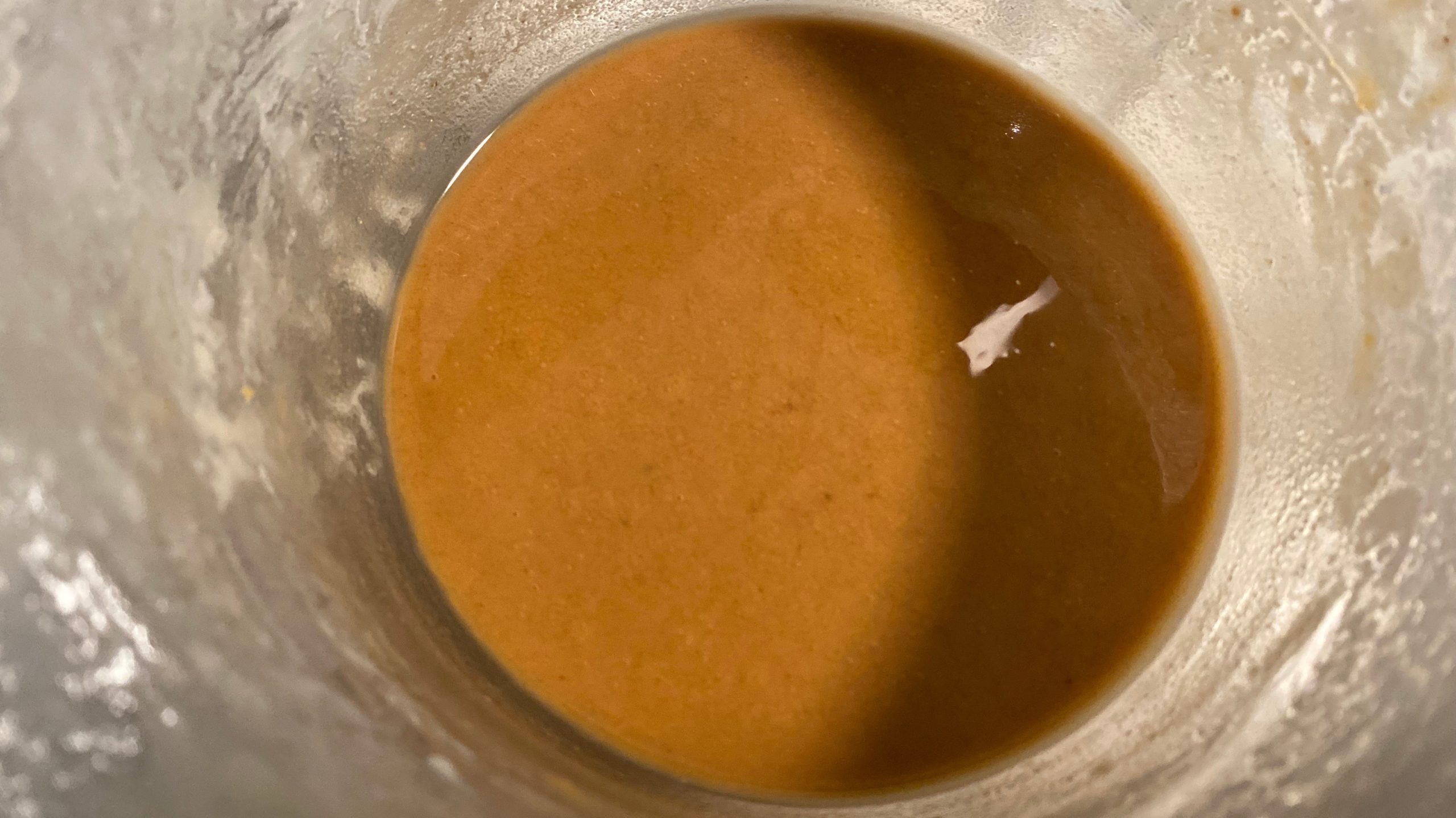Every year, I make turkey gumbo with my leftover Thanksgiving bird, and every year I complain about stirring the roux. Roux is not difficult to make. Combine equal amounts of fat and flour, whisk until smooth, then cook, stirring continuously — and I really do mean continuously — until it reaches the colour you desire.
If you’re making a simple gravy, a blonde roux will work just fine; but if you’re making gumbo, you want that roux to be a dark chocolate brown, and getting it there on the stovetop takes at least 45 minutes of continuous cooking and stirring, usually more.
I do not like being stuck in any one spot for that long, and I recently tweeted my displeasure while making the roux for my 2021 batch of Leftover Turkey Gumbo:
https://twitter.com/a/status/1464770952781201412
After I tweeted this, several people responded that they make theirs in the oven, and another suggested the microwave. How I had never heard of either of these methods from my gumbo-making family is a mystery to me, but I suspect it has something to do with Cajun obstinance. In any case, I knew I had to try both methods. If I could eliminate all, or at least a large percentage of, the stirring from my gumbo making process, I would make gumbo a lot more often.
How to make roux in the oven

According to Alton Brown, making roux in the oven is easy. Weigh out equal parts of flour and oil by mass (he uses four ounces of each to make his gumbo), whisk it together in a 5-quart Dutch oven, then cook it in a 175°C oven for an hour and a half, whisking every 20 minutes.
Roux freezes well, so I decided to make twice as much as Alton recommended. I also used a much smaller cooking vessel, because my Dutch ovens were full of leftover rum ham and yellow eyed beans. It worked out just fine, but it took much longer than an hour and a half to reach that dark, chocolate brown I was looking for.
But, after four hours of baking, and stirring well every half hour, I had about two cups of dark brown, lump-free roux. I let it cool (do not skip this step), poured it into a glass jar, and set it in fridge (where it will keep for at least six months). If I were to do it again, I would use a bigger vessel so the roux could spread out a little and cook a bit faster. A bigger vessel is also the safer choice, because you do not want to slosh hot, bubbling roux onto your flesh. (If you’ve never had a roux burn, you do not want one. You are essentially frying flour in oil, and that scorching paste loves to stick to human skin.)
Pros of making roux in the oven:
- It’s hands-off.
- You only have to stir once every half hour.
- You can make a whole bunch at once and store it until you’re ready to use it.
Cons:
- It can take quite a while.
- It’s best made the day before.
How to make roux in the microwave
Making roux in the microwave is by far the fastest way to make it, but you are fairly limited in scope. I made my first batch of microwave roux with 1 cup of oil and 1 cup of flour — sometimes I’m lazy and use volume instead of mass; it works out fine! — and that batch bubbled over in the microwave.

It wasn’t a huge spill, but given the scalding nature of roux, it gave me pause. I (bravely) soldiered on and finished cooking the batch without further incident, using the first three paragraphs of this recipe as a guide.
Much like the oven roux, this roux took longer than promised; unlike the oven roux, it was still the fastest method I’ve ever used. Leslie in Texas had written that it would take 7-8 minutes to get my roux to that prized dark chocolate point, but it took 14 whole minutes, which is still not very many minutes.
This, obviously, is much better than an hour of continuous stirring, and the procedure is simple: Combine equal amounts of flour and oil in a large microwave safe vessel (a 4-cup Pyrex measuring cup works well), then nuke on full power for six minutes. At this point you will have a very hot, blonde roux. Stir well — I used a spoon to scrape the bottom and a whisk to make sure I got all the clumps out — then nuke for a minute more, stir, and repeat, nuking a minute each time and stirring in between, until your roux is dark brown. (This took 12-14 minutes, depending on the size of the batch.)
You may be tempted to try and speed up the process even further by nuking for three, or even four minutes in between additions. Don’t! You’ll end up with burnt roux clumps, and no one wants that.

Even with shorter, one-minute blasts, your roux will look fucked up each time you take it out of the microwave. Don’t worry though — all it takes is a little whisking to turn this:

…into this:

Keep going, nuking and stirring, until you reach that gorgeous, melted dark chocolate colour. Then either use immediately or let cool completely before transferring to a sealable container and storing in the fridge for up to six months, or in the freezer for a year.
Pros to making roux in the microwave:
- It’s super fast.
- It’s super easy.
Con:
- You can only make a little bit at a time (about 3/4 of a cup of each of fat and flour) without it bubbling over.
Both methods are solid
Both cooking roux in the microwave and cooking it in the oven work really well. Each method produced a dark brown, lump-free roux. I did notice a little oil separated from both batches after cooling, but I was able to easily decant that off of the top (you can also just stir it back in if there’s not too much).
Use the microwave method if you want gumbo now, and the oven method to make a whole bunch at once, then dip into your supply as needed to make gumbo on a whim. Roux freezes very well — you can even freeze it in an ice cube tray for easy portioning.
Whichever method you choose, please be careful. Roux can be very splashy, so stir slowly and methodically, and use high-walled cooking vessels whenever possible. Gumbo is amazing, but roux burns are the exact opposite of that.

Leave a Reply
You must be logged in to post a comment.